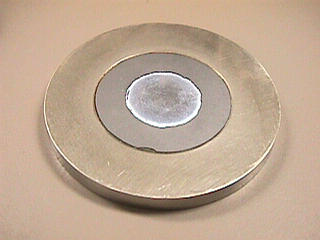 |
Some samples may exist only in very small quantities,
e.g. a dusting
of a material on the inside of a sample bottle. Under these circumstances
it is not possible to fill one of the standard flat-plate sample holders.
One solution is to use a silicon crystal cut in such a way that the planes
within the crystal never fulfill the Bragg condition. The sample can
then be sprinkled onto the surface of the crystal. Some powders simply
stick electrostatically to the silicon surface, while for other samples
a trace amount of silicon grease should be smeared onto the silicon
crystal beforehand. The big advantage of using silicon crystals in this way
is that the background scatter from the mount itself is close to zero.
|

